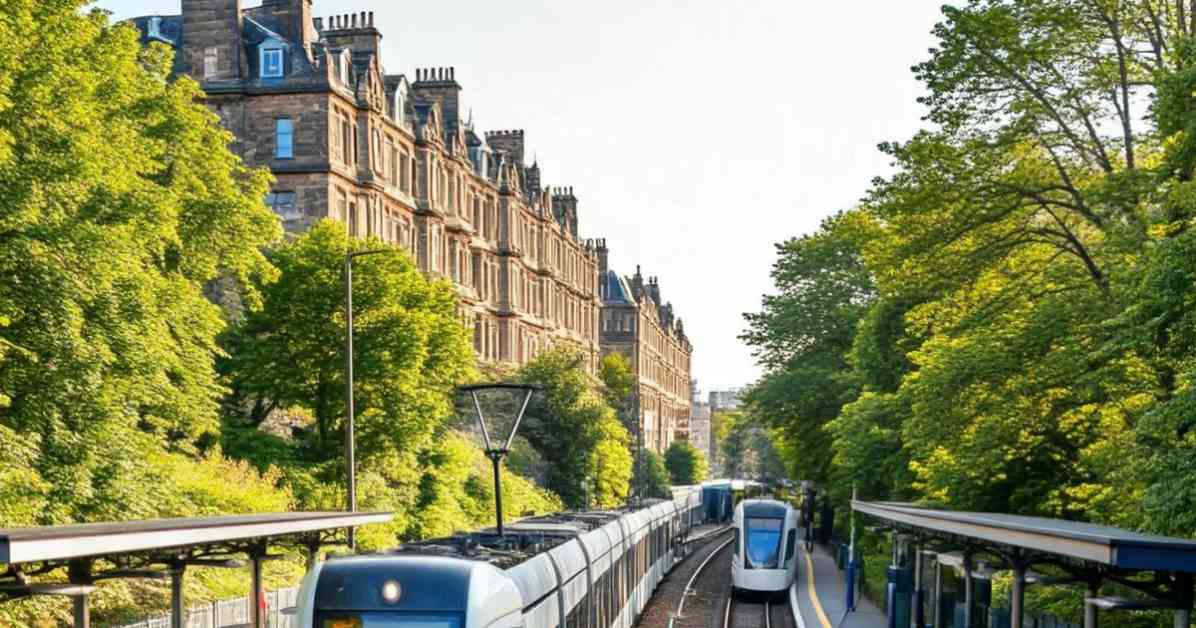Calls are being made by a team of students from Heriot-Watt University to reopen a historic Edinburgh rail route that has been out of service for over 60 years. The South Suburban Line, which originally opened in 1994 and ceased passenger services in 1962, is the focus of a campaign to integrate it into the existing tram network. The team believes that this initiative could create a new transport corridor that would benefit the city and its residents.
Reviving a Historic Connection
The South Suburban Line, stretching 12.3 kilometers from Murrayfield to Portobello, passes through several key neighborhoods in Edinburgh, including Craiglockhart, Morningside, Newington, Cameron Toll, Craigmillar, Fort Kinnaird, and Brunstane. Despite being maintained by Network Rail for freight transportation, the students argue that the line is an underutilized asset that could play a significant role in reducing car miles traveled in the city.
Caitlin Cummings, a final-year Civil Engineering student involved in the project, expressed her enthusiasm for breathing new life into the South Suburban Railway. She believes that reviving this route would not only make travel easier for residents but also encourage them to opt for public transport over private vehicles. In addition to integrating the South Suburban Line into the tram network, the students are also exploring the possibility of extending a separate line from Portobello to Leith using a disused railway line. This expansion would further enhance public transportation options in the city while minimizing disruption to roads, businesses, and the environment.
Innovative Transport Solutions
Corey Boyle, another final-year Civil Engineering student involved in the project, detailed the proposed system of discontinued electrification as an alternative to full route electrification. This innovative approach would allow battery electric vehicles to operate on battery power in certain sections and switch to overhead lines at designated points, thereby reducing costs and overcoming potential obstacles like low bridges. By implementing this low-carbon and practical transport option, greater connections between southern neighborhoods and the city center could be established, benefiting residents and visitors alike.
Edinburgh City Council’s Transport and Environmental Convener, Councillor Stephen Jenkinson, commended the students for their efforts in advocating for an interconnected public transport system in the city. He acknowledged the importance of projects like the South Suburban Railway in addressing Edinburgh’s transportation needs, environmental responsibilities, economic growth, and housing challenges. Councillor Jenkinson emphasized the significance of the North-South tram route as a key component of the city’s public transport network and expressed his support for exploring how it could be integrated with other transportation options across Edinburgh and neighboring areas.
In conclusion, the campaign to reopen the South Suburban Line represents a compelling opportunity to enhance Edinburgh’s public transport infrastructure and promote sustainable travel practices. By leveraging the enthusiasm and expertise of students like Caitlin Cummings and Corey Boyle, the city has the potential to unlock new possibilities for efficient, innovative, and interconnected transportation solutions that benefit all residents and visitors. As Edinburgh continues to evolve and expand, initiatives like the South Suburban Railway revival play a crucial role in shaping a more accessible, sustainable, and vibrant urban environment.













